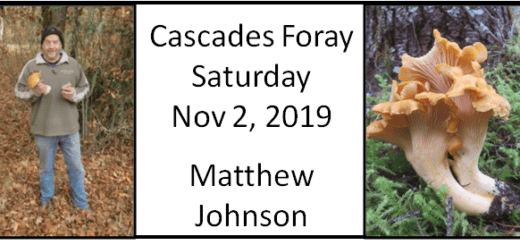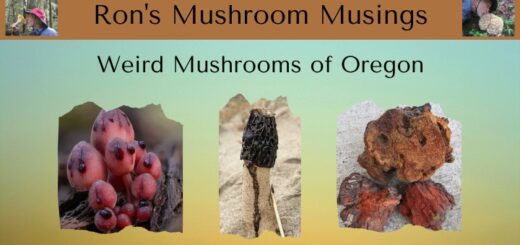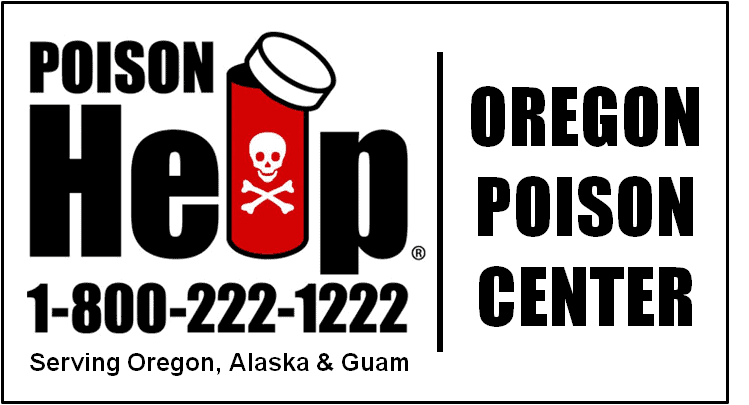Charles Bruder – 2024 Scholarship Recipient

The CMS Board voted to grant the Freeman Rowe Educational Scholarship to Charles Bruder at the December 2024 Board Meeting. Merry Christmas Charlie! Charlie is a young enthusiastic mycologist who lives in Corvallis, attends OSU, and has already spoken to CMS twice. I emphasize young, as Charlie is our first undergraduate scholarship granted since we added this option to our program in 2020. Charlie is currently a Junior at OSU working on a degree in microbiology. Hopefully, by the time he delivers his next presentation to CMS to inform us of the results of his research we will be able to take him our for a celebratory adult beverage afterwards. And, we hope he continues on his educational path and applies for CMS scholarships during his masters and graduate programs.
Below are the answers to pertinent questions submitted by Charlie as part of his Freeman Rowe Scholarship application.
What is your experience with fungi? I have been foraging and identifying fungi for many years. Since moving to Oregon multiple years ago, I have been active in Oregon’s mycological community, advocating for more holistic methods of cultivating fungi, and furthering the collection and use of native over invasive fungal species. I currently work in a laboratory at OSU that houses one of of the largest fungal culture collections in the Pacific Northwest (the wood decoposition/biodetioration lab). Within this lab, I am responsible for maintaining the culture collection, as well as microscopy and genetics related tasks.
What are your professional goals and interests? I am interested in advancing our collective knowledge of fungi and other microbes through pursuing further education in microbiology, eventually aiming at either continuing research in academia, or making tangible progress in the incorporation of fungi into our food/medical systems through the private sector. This is to say, I aim to be a career mycologist in one way or another.
Below are the objectives for Charlie’s research proposal. You may read the full proposal here.
Mushroom producing fungi, especially those within the phyla basidiomycota represent a food product of increasing popularity in the US. Despite this, they are still a relatively minor component of the American diet and are generally considered a novelty product. The production of most major human food commodities, both plant and animal based, has been achieved through the same model of gradually domesticating an organism, differentiating it from its wild counterpart. During domestication, organisms often experience multiple bottleneck events, wherein subsequent generations have significantly reduced genetic and phenotypic diversity. Rates of domestication are highly variable, depending on both the intensity of cultivation, species specific traits, and other cultural factors that influence patterns of subsistence. Modern scientific methods have greatly improved our understanding of sexual reproduction, and allowed breeding programs to more efficiently domesticate, propagate, and select traits in living organisms. One technique used to massively increase the value of foodstuffs has been the induction of polyploidy in plant crops. In plants, polyploidization can increase size, intensify traits, or induce sterility of fruit, all of which are useful for creating more nutritious, better tasting, and appealing crops.
The objective of this research is to identify whether conventional methods of inducing polyploidy in plants are achievable in fungi. Specifically, this research aims to determine whether the chemicals colchicine and cytochalasin-B are able to double chromosomes in fungi, leading to the production of dikaryotic mycelium containing two diploid nuclei (2n+2n, double diploid), which fuse during karyogamy to produce tetraploid basidia (4n). In the case of successful polyploidization, morphologies of polyploid fungi will be compared with regular haploid dikaryotic cultures (n+n), assessing changes in mushroom morphology and traits. Polyploid fruiting bodies may be larger, or more visually appealing, and faster growing, potentially helping increase the popularity of mushrooms as a food source. Induction of sterility through the creation of triploid mycelium (2n+n), will also be attempted through the mating of a diploid monokaryon with a haploid monokaryon (2nxn). Induction of sterility may be a useful tool in preventing cultivated mushrooms from becoming invasive and reducing native population vigor through outcrossing depression.





